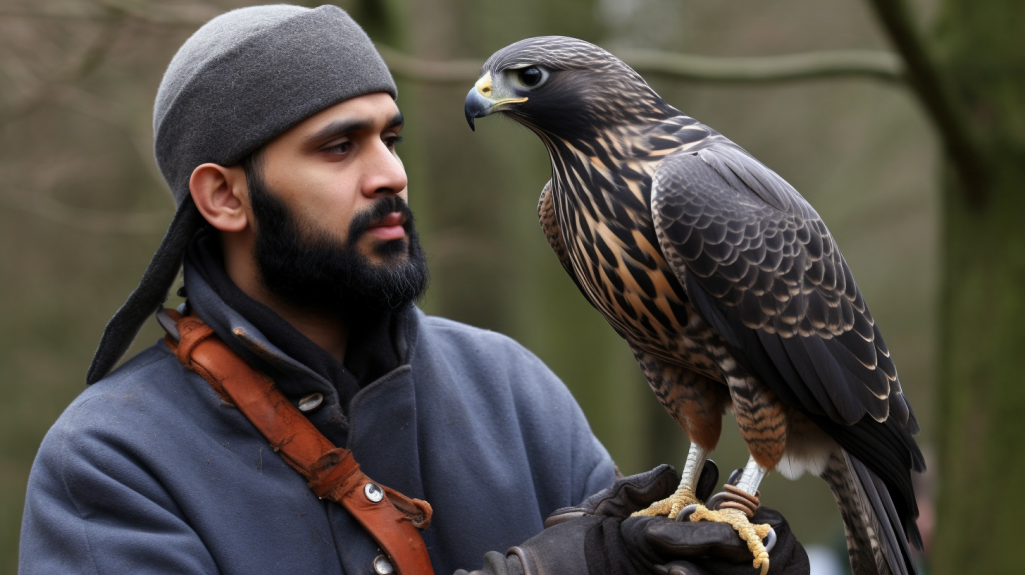In the boundless expanse of the sky, where the wind dances with the clouds and the sun kisses the earth, lies a symphony of ancient artistry that has stood the test of time – falconry. A sport as old as civilization itself, falconry embodies a profound connection between humans and birds of prey, showcasing the harmonious relationship between mankind and the untamed forces of nature. In this exploration, we venture into the heart of this age-old tradition, unraveling the intricate tapestry of falconry and its evolution from a survival skill to an art form.
A Journey Through Time: Origins of Falconry
The roots of falconry trace back over four millennia, originating in the vast steppes of Central Asia and spreading across the globe with nomadic tribes and merchants. Initially, falconry was a means of hunting for sustenance, as humans discovered the incredible hunting prowess of raptors such as falcons, hawks, and eagles. These magnificent birds became revered hunting companions, aiding humans in capturing elusive prey and ensuring survival in the wilderness.
As civilizations flourished and empires rose and fell, falconry transcended its utilitarian origins. It became a symbol of power and nobility, finding favor among kings, emperors, and aristocrats throughout history. The art of training and flying birds of prey became a cherished tradition, passed down through generations, embodying the epitome of human-animal partnership.
The Falconer’s Arsenal: Instruments of the Trade
Central to the art of falconry are the tools and techniques employed by falconers to communicate with and care for their avian companions. The leather gauntlet, worn on the falconer’s dominant hand, serves as both a perch and protection against the sharp talons of the birds. Hooding, the practice of covering a falcon’s eyes with a hood, calms the bird and prepares it for the hunt, showcasing the delicate balance between control and respect.
Falconers also use a variety of specialized equipment, including bells and telemetry devices, to monitor and locate their birds during flights. The partnership between falconer and raptor is not just one of skill but also of trust, where mutual understanding and respect form the cornerstone of their relationship.
The Dance of Trust: Training Falcons and Hawks
Training a bird of prey is an intricate dance, where patience, consistency, and understanding are key. Falcons and hawks, known for their intelligence and keen instincts, require a careful balance of discipline and reward. Positive reinforcement techniques, such as providing food rewards, build trust between the falconer and the bird, encouraging desired behaviors.
The training process, known as falconry’s mews, involves acclimating the bird to its surroundings, teaching it to return to the falconer’s gloved hand, and mastering the art of flight. This delicate bond formed through training transforms the relationship between human and raptor into a harmonious partnership, a testament to the ingenuity of ancient hunters.
Preservation of Tradition: Falconry in the Modern World
In the contemporary era, falconry has transcended its historical roots, finding a place in the hearts of enthusiasts and conservationists alike. While it is no longer a necessity for survival, falconry endures as a living tradition, celebrated in festivals and competitions around the world. The symbiotic relationship between humans and raptors continues to thrive, with conservation efforts playing a pivotal role in preserving endangered species and their habitats.
Falconry also plays a crucial role in education and awareness, inspiring future generations to appreciate the beauty of these magnificent birds and the importance of preserving their natural habitats. Through falconry, individuals are given a glimpse into the intricate web of nature, fostering a deep respect for the environment and its diverse inhabitants.
The Enduring Harmony of Falconry
In the realm of falconry, where the sky meets the earth and the ancient art of hunting converges with the modern world, a timeless harmony resonates. The artistry of falconry stands as a testament to the ingenuity and respect of our ancestors, showcasing the delicate balance between humanity and the natural world.
As we gaze skyward, witnessing the magnificent flight of a trained raptor, we are reminded of the enduring bond between humans and the wild. In the symphony of falconry, where wings and hearts unite, we find not only a celebration of ancient hunting techniques but also a profound appreciation for the beauty of nature and the extraordinary creatures that grace our skies.

